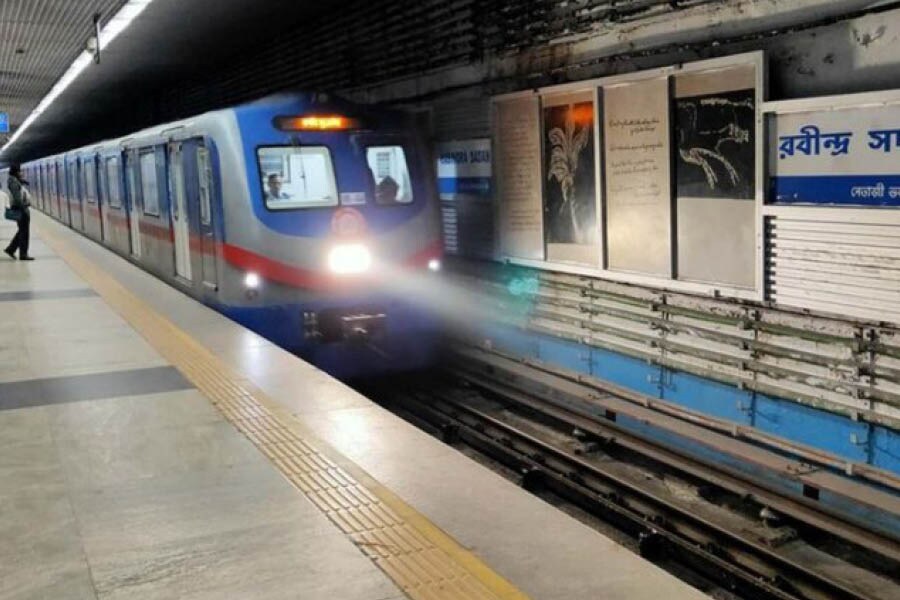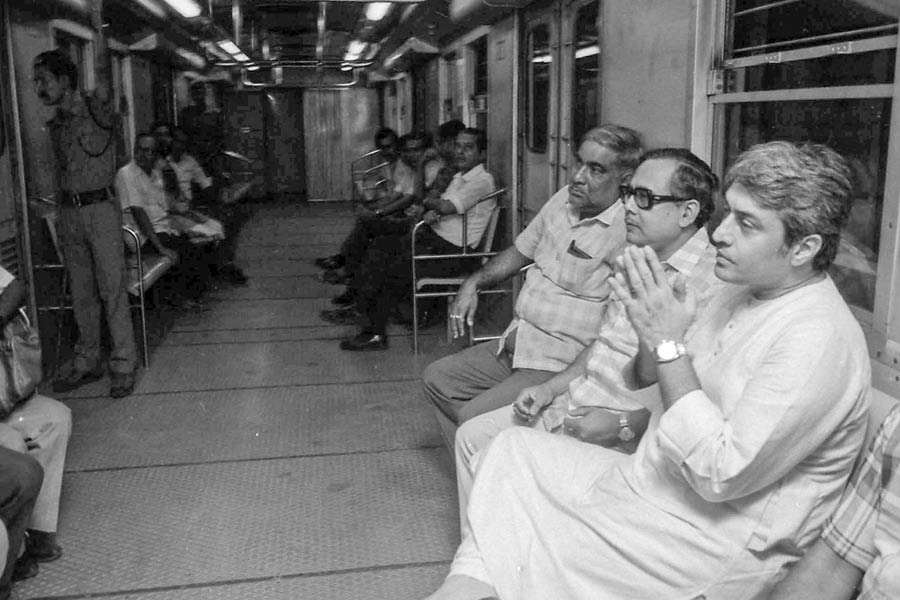When did Calcutta witness the biggest gate crash at a public event?
Elders will point to January 1, 1967, at Eden Gardens, during the India versus West Indies Test match, when an overcapacity crowd turned a cricket match into a scene of chaos.
The younger generation might remember April 2000, when Hrithik Roshan came to inaugurate a music store on Park Street, and an overenthusiastic sea of fans nearly destroyed the shop.
However, those in their midlife will recall a day exactly 40 years ago, when Calcutta, the city of many ‘firsts’ in India, made history once again. On that day, at 8.30 in the morning, the country witnessed the arrival of one of the world’s best rapid transportation systems — the underground Metro in Kolkata.
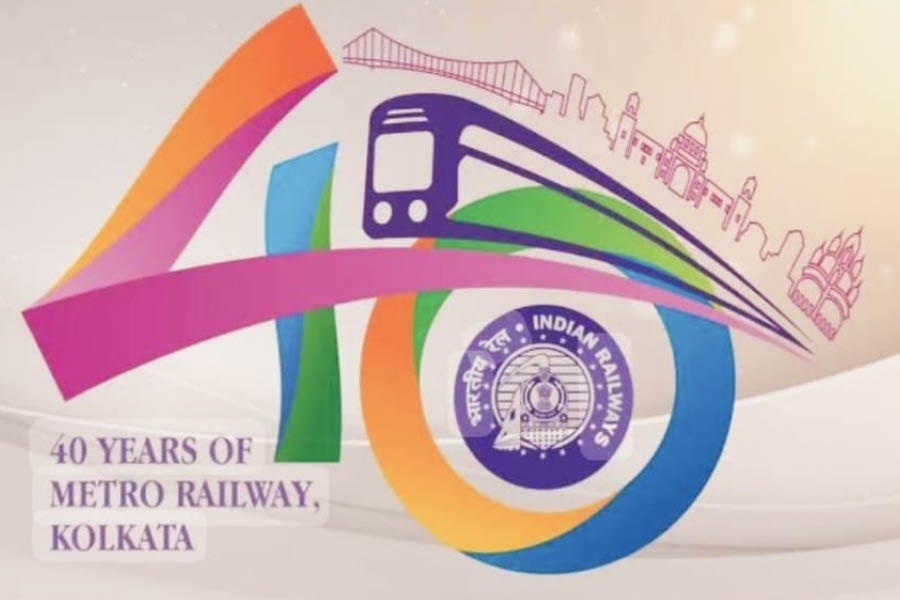
On Diwali, October 24, 1984, Calcutta (now Kolkata) became the 65th city in the world, the 5th in Asia, and lastly, the first in India to have an underground city railway as a mode of public transportation Metro Railway Kolkata
It was Diwali in 1984, and the festive mood in Calcutta got lifted with a unique gift for which the city had endured an unimaginable degree of pain for more than 12 years. However, this moment came nearly 50 years too late.
The need for an underground tube railway and a large cantilever iron bridge over the Hooghly river to connect Calcutta and Howrah was felt by our colonial rulers in the mid-1920s. A team of experts surveyed both projects and concluded that they were not only feasible but essential for maintaining the city's mobility.
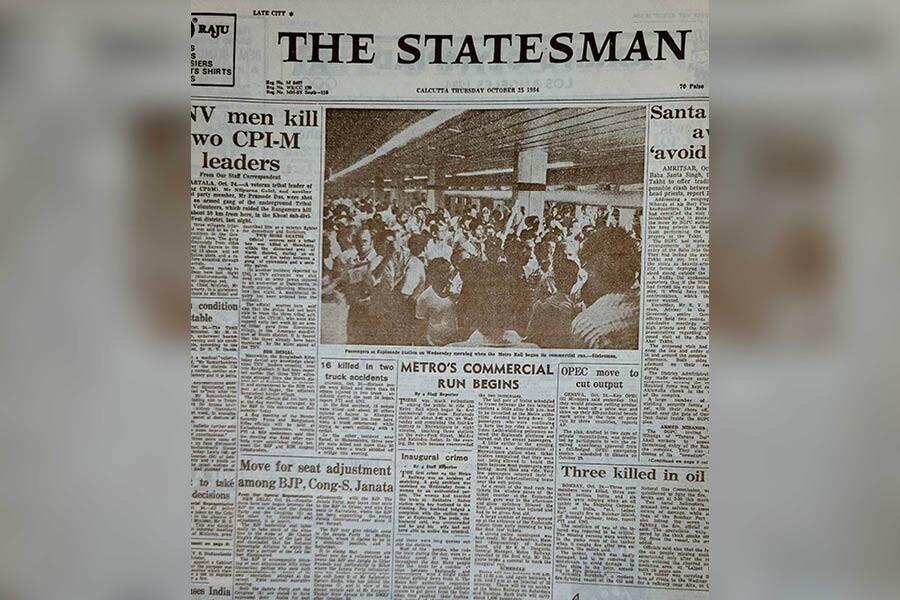
The Statesman, on October 25, 1984, announced the commencement of Metro’s commercial run From personal collection of Somen Sengupta
In its editorial note dated July 14, 1929, The Statesman mentioned this point: “Calcutta is a city strangling from want of outlets and its citizens pay a terrible price only in money but in lives and in ill health for the fact that in the midst of abundance of land they are every years crowding more on to the narrow spaces that are provided with transport, with water and with drainage for running a tube railway under the Hooghly and across Calcutta will come as a surprise”.
Due to the British government’s financial constraints, both projects were shelved. However, one of them, the massive cantilever bridge known as Howrah Bridge, was eventually constructed and opened to the public in February 1943. However, the plan of running an underground tube even under the riverbed was never thought of.
The initiative to build an underground tube was again considered in the early-1970s, and eventually, Gulzarilal Nanda, as railway minister during Mrs Indira Gandhi's regime, approved the funding for Calcutta’s underground tube rail. The Planning Commission sanctioned a budget of Rs 2,000 crore for the first phase and an additional Rs 1,000 crore for the final phase. The plan outlined a 16 km line from Dumdum to Tollygunge and another 9km from Salt Lake City to Ramrajatala in Howrah.
However, hardly anyone took the announcement seriously, given the challenges posed by Calcutta's massive unplanned urbanisation, soft soil and politics.

A newspaper clipping shows, on December 29, 1972, opposite the Indian Museum, Indira Gandhi, the then Prime Minister of India,laid the foundation stone for India’s first underground tube project Somen Sengupta
On December 29, 1972, opposite the Indian Museum, Indira Gandhi, the then Prime Minister of India, in the presence of several cabinet members and Siddhartha Shankar Ray, then chief minister of West Bengal, laid the foundation stone for India’s first underground tube project, with the expectation of completing the first phase by 1978.
A Moscow-based Russian company, Techno Export, was commissioned to conduct all ground-level surveys, working alongside top engineers from Indian Railways. A new organisation called the Calcutta Metropolitan Transport Project was formed under the Ministry of Railways, and soon became popularly known as Calcutta Metro. Noted journalist Amitabha Chowdhury coined the term ‘Patal Rail’ in Bengali, and from then on, the underground tube in Bengal became known by this name to local commuters.
The railways involved various organisations, including Hindustan Construction Company, National Projects Construction Corporation, Hindustan Builders, several technical institutes, the Geological Survey of India and also a Japanese company, Taisei Corporation.
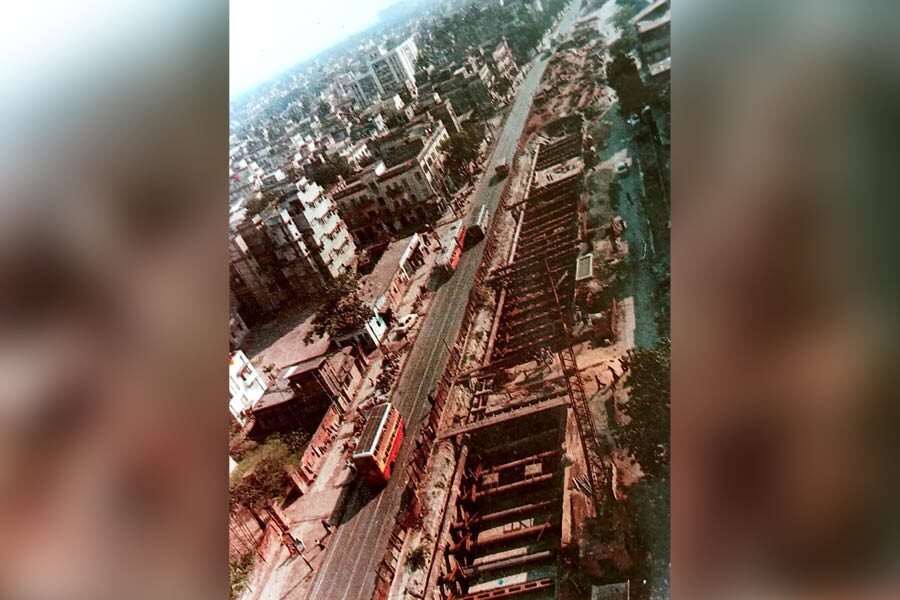
The construction of Metro Rail in the 1980s From the collection of Debasis Mukhopadhyay, a scholar on Satyajit Ray's life and work
From the very beginning, the project faced unprecedented challenges and nightmarish difficulties.
Though work began in 1973-74, the initial pace was very slow. In 1977, Indira Gandhi lost power, and the new Janata Party government practically stopped funding the project. In the same year, the Left parties came to power in West Bengal.
The project faced numerous challenges, including legal battles, land acquisition issues, political opposition, conflicts with local authorities and the public, inadequate logistical support, poor raw material supply chains, and the unplanned urban structure of Calcutta. These obstacles hindered progress at every step. In 1980, Indira Gandhi returned to power and appointed a young Bengali leader, A.B.A. Ghani Khan Choudhury, as Railways Minister. He took extraordinary measures to support the construction of the Calcutta Metro, aiming to complete the first phase by 1983.
The underground tunnel, with tracks at least 9.65 metres below ground, was constructed using the ‘Cut & Cover’ method, which turned the entire city of Calcutta into a messy construction site.
Overnight, Calcutta became an eyesore, with large mounds of excavated soil, narrow, diverted roads, and the destruction of gardens and parks, many of which became open-air dumping grounds for Metro rail debris. Water bodies were polluted, numerous old buildings were demolished, century-old trees were felled, and the green stretch of the Calcutta Maidan was damaged. Even small colonial structures meant for city beautification were lost. The statue of Mahatma Gandhi was removed from its old place and taken to Mayo Road.
The project aimed to cover a 16 km line, connecting Dumdum in the north to Tollygunge in the south, with 17 stations in between, and a travel time of only 33 minutes.
Of these 17 stations, 16 were underground, with platforms at least 170 metres long. The line was designed to go underground from Belgachia station, after travelling nearly a kilometre on open track from Dumdum.
It was expected that by the end of 1990, the Calcutta Metro would carry 67,000 passengers per hour in 31 trains. The maximum speed underground would be 80 km/h, with an average speed of 33 km/h. Also, all stations, including the coaches and common areas, were supposed to be fully air-conditioned. The Metro would be equipped with modern lighting, automatic signalling and an efficient public announcement system. Once the entire project was completed, the total distance covered would be 37.72 km.
By the end of 1984, work was completed on a 3.4 km stretch from Esplanade to Bhowanipore. And on Diwali, October 24, 1984, Calcutta (now Kolkata) became the 65th city in the world, the 5th in Asia, and lastly, the first in India to have an underground city railway as a mode of public transportation.
Neither the Prime Minister, the Chief Minister of West Bengal, nor the Railway Minister was present at the inaugural ceremony. Instead, Khagendra Narayan Dasgupta, the General Manager of Metro, broke a coconut at Esplanade station in front of a cheering crowd, and India’s first Metro train rolled onto the tracks, making history.
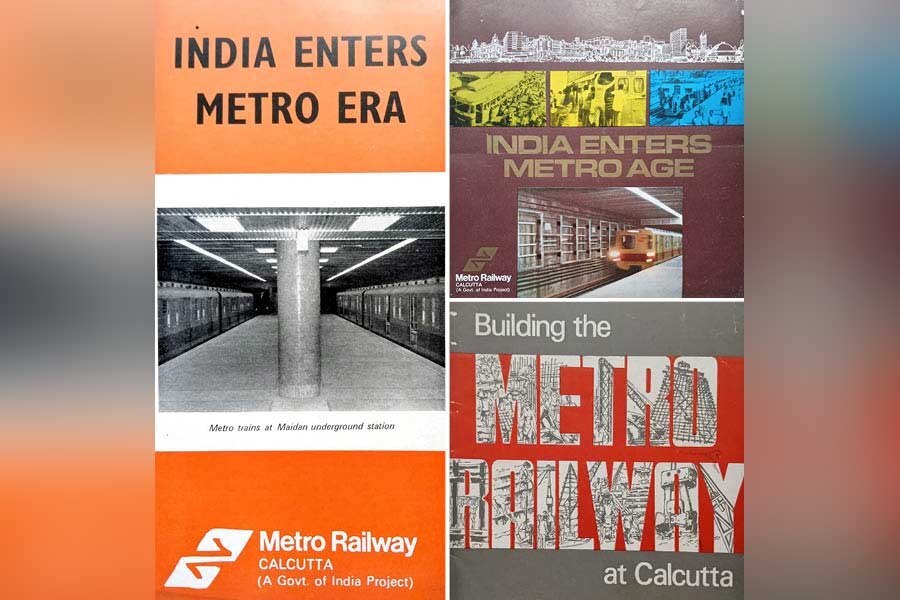
Various Metro Railways catalogues Debasis Mukhopadhyay's personal collection
The 3.4 km stretch was covered in about 8 minutes — touching five stations: Esplanade, Park Street, Maidan, Rabindra Sadan and Bhowanipur. The fare was set at just Re 1.
The excitement among the riders was unparalleled. Every station was overcrowded from the early hours and ticket counters were full. Such was the joy among the people that many began taking multiple rides on a single one-way ticket. At the terminal station, many passengers refused to vacate the train, causing chaos for those waiting for the next ride. There was congestion and commotion on every platform, and during the tumult, a glass panel at Esplanade got shattered, injuring a man who required first aid. The first crime also took place that day when a woman, travelling from Rabindra Sadan with her husband, had her gold necklace snatched while on the train.
To manage the crowd, the police were forced to halt ticket sales for at least an hour and had to make continuous public announcements urging passengers to vacate the coaches after a single ride, as large numbers of people were still waiting outside the station.
On November 12, 1984, another section of the Metro, a 2.15 km stretch between Dumdum and Belgachia, was made operational. Finally, on April 29, 1986, the 7.55 km line from Bhowanipur to Tollygunge was also opened.
However, many stations in the north were still non-operational, and there was no direct connectivity between Dumdum and Tollygunge. This was achieved on February 15, 1995 when Belgachia was connected to Esplanade, with several stations — including Central, Chandni Chowk, Shyambazar and Shobhabazar — becoming operational. Only M.G. Road opened later, on September 27, 1995, and with that, the full 16.32 km stretch from Dumdum to Tollygunge was finally linked.
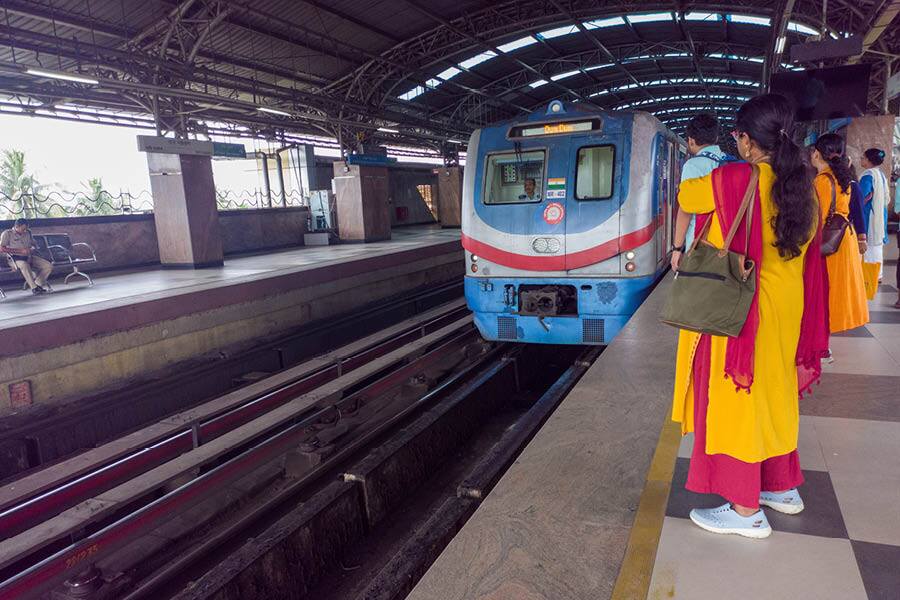
Since 1995, the Metro has become a lifeline for Kolkata Shutterstock
India got its second Metro city, Delhi, in 2002, about 18 years after Calcutta first experienced the joy of modern city transport. Since 1995, the Metro has become the lifeline of Kolkata. It is often said that the Metro in Kolkata is to the city what the Harbour line of the local train service is to Bombay.
In the last few years, the expansion of the Metro has been remarkable, now covering more than 60 km. By next year, it will expand to 90 km, and within three years, the city and its suburbs will have a robust 130 km Metro network.
In a nutshell, the Metro
railway has transformed the character of Kolkata’s residents over the last 40
years. The once ‘impossible dream’ continues its remarkable journey.
